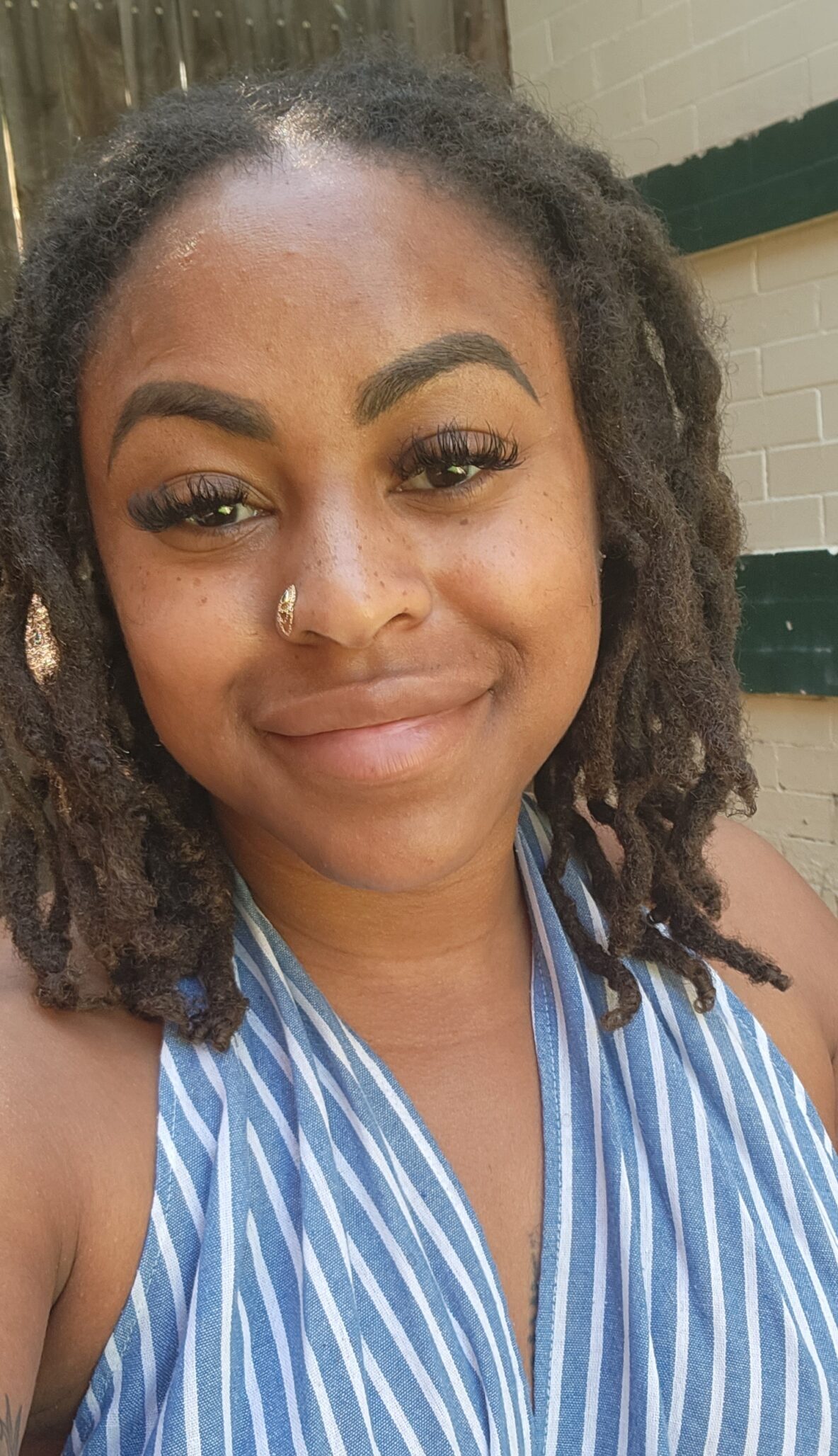Cover art created using OpenAI’s DALL-E image generator*
“It was my destiny to join a great experience”- This quote by Herman Hesse welcomed attendees to the 2023 biannual Psychedelic Science Conference hosted by MAPS in Denver, Colorado. Like hundreds of others in the crowd, I was filled with excitement and awe at being present for the world’s largest gathering of psychedelic enthusiasts. Presentations at the conference ranged from celebrity guest speakers to expert panels, to a myriad of presentations catered to science, business, and mental health research on psychedelics. As a Ph.D. student eager to hear and learn about ways in which psychedelics can be utilized in my field, I was overcome with anticipation and enthralled about the connections I could make. However, my cherry-picked optimism was quickly diminished by concerning chatter amongst BIPOC attendees around me, and I was forced to take off my rose-colored glasses. These sentiments amongst the BIPOC attendees were captured at the closing ceremony with a protest from Indigenous community leaders (and allies) who were calling for the missed recognition of their contribution to this field. What went wrong and what can we learn from this moving forward?
Although we are currently experiencing a resurgence in science on the efficacy of psychedelic compounds for mental health (often referred to as the “psychedelic renaissance”), the practice of taking psychoactive plant medicines has been a long-standing tradition amongst many Indigenous cultures for millennia. My terminology of Indigenous peoples will be in reference to the many melanated groups that use plant medicine to include (but are not limited to) Native Americans and tribes from Brazil, Mexico, and Africa. In her book titled Consciousness Medicine: Indigenous Wisdom, Entheogens, and Expanded States of Consciousness for Healing and Growth, Francoise Bourzat stated that many of these Indigenous communities around the world practiced altered states of consciousness for emotional well-being and as a way of life. Typically, these ceremonies were led by a shaman or trusted elder in the community and included the ingestion of mescaline, ibogaine, ayahuasca, and psilocybin mushrooms.
In the West, psychological research on the study of psychedelics started in the 1960s but stopped due to the United States’ Controlled Substance Act of 1970. Research recommenced in the 1990s and has continued to flourish with current clinical trials focused on psychedelic administration for mental health concerns. According to Robin Carhart-Harris and colleagues, several clinical trials utilizing psychedelic-assisted therapy (PAT) have shown promise in the treatment of depression, anxiety, obsessive-compulsive disorder, and addiction. Within the past year, Oregon, Colorado, and Washington D.C. have decriminalized psychedelics and there are training programs in Oregon and California for PAT programs. While the excitement around legalization and PAT seems warranted, there seems to be a paucity of incorporating Indigenous knowledge. As science and research move full speed ahead, consideration should be given to the Indigenous peoples who have done and continue to do ceremonial work (referred to throughout this post as Indigenous practices-). I fear that amongst this haste and excitement about legalization and certification programs, we might have forgotten the voices of those who created the foundation for healing with psychoactive medicines.
The recount of psychedelic use within Indigenous communities has often been reported through a colonized perspective, depicting use through a distorted and inaccurate lens. According to historian Andrea Ens, many researchers who have documented Indigenous use of psychedelics used non-Indigenous ceremony attendees to discuss their experience instead of interviewing Indigenous facilitators as well to gain a more comprehensive, accurate understanding. The non-existent use of Indigenous wisdom seems to be a well-documented pattern. Anthropologist Keith Williams described the psychedelic renaissance as “colonial extractavism” and called for the inclusion of Indigenous knowledge for Western enthusiasts. Beatrice Caiuby, an anthropologist and executive director of the Chacruna Institute for Psychedelic Plant Medicines stated, “In many, many ways, all of us are indebted to Indigenous peoples and their traditions and their knowledge when we are interested in these medicines”. One place to start is to gain an understanding of how the medicines have been used directly from the Indigenous practices.
The psychedelic renaissance has birthed the creation of PAT, but traditionally the practice has long been known as rituals or ceremonies. Ceremonies in many Indigenous cultures are typically led by a guide who is sometimes called a shaman. This person typically has years of training and experiences with altered states of consciousness. In contrast, MAPS (currently the largest non-profit leader in psychedelics) has a certification program for MDMA-assisted therapy which only takes three months in addition to general training for their respective clinical licensure. I am curious about what might be missed or overlooked when a practice that has traditionally taken years to understand and cultivate is reduced into a three-month training program.
Similar to underground practices, current researchers in the field of psychedelics stress the importance of set and setting. However, the setting in underground ceremonies greatly varies from the Western modernized practice. According to Carl Hart in his 2021 book, Drug Use for Grownups, “set” involves the specific mindset the person is in before taking a substance, and “setting” refers to the context of the environment. Many Indigenous groups have an altar consisting of various important objects to “invoke a sense of the sacred” -Francoise Bourzat. There is also an emphasis on community, with ceremonies typically occurring in group settings. In alignment with Western cultures’ value of individualism, PAT consists of just the individual and one or two clinical guides. Clinical trials with PAT conducted in this format have been shown to reduce anxiety and depressive symptoms, alcohol dependency, and improve symptoms of obsessive-compulsive symptomatology as evidenced by the clinical trials conducted by Robin Carhart-Harris. Despite these findings, I wonder to what degree providing community could play a role in our implementation of this sacred practice.
This is not by any means a call to end the psychedelic renaissance, and this is not a call out to the science community and those of us “above ground,” but rather a calling in. I invite you to reflect on the tangible ways you can actively incorporate Indigenous wisdom- not in an extractivist manner, but in a way that pays homage to the underground practitioners who have paved the way. What does giving our respect to those who came before us look like to you? What differentiates appropriation from appreciation? As we reflect on these questions, one example we can refer to is Colorado’s implementation of Indigenous reciprocity in their draft laws for the legal use of psilocybin.
What could have been different if the Psychedelic Science Conference had kept reciprocity to Indigenous voices in mind? The concluding theme for Psychedelic Science was “Be the Bridge”. This statement was intended to reference acting as a liaison between friends, family, and society at large for us to help normalize psychedelic use and knowledge. As we move forward with the psychedelic renaissance, I urge us all to be mindful to not only bridge the gap between friends and family, but those who came before us as well.
Citations
Ens, A. (2021). Silencing indigenous pasts: Critical Indigenous theory and the history of psychedelics. International Journal of Qualitative Studies in Education, 34(10), 904–914. https://doi.org/10.1080/09518398.2021.1942297
Bourzat, F., & Hunter, K. (2019). Consciousness medicine: Indigenous wisdom, entheogens, and expanded states of consciousness for healing and growth. North Atlantic Books.
Carhart-Harris, R. L., & Goodwin, G. M. (2017). The therapeutic potential of psychedelic drugs: Past, present, and future. Neuropsychopharmacology, 42(11), 2105–2113. https://doi.org/10.1038/npp.2017.84
Ens, A. (2021). Silencing indigenous pasts: Critical Indigenous theory and the history of psychedelics. International Journal of Qualitative Studies in Education, 34(10), 904–914. https://doi.org/10.1080/09518398.2021.1942297
Fogg, C., Michaels, T. I., de la Salle, S., Jahn, Z. W., & Williams, M. T. (2021). Ethnoracial health disparities and the ethnopsychopharmacology of psychedelic-assisted psychotherapies. Experimental and Clinical Psychopharmacology, 29(5), 539–554. https://doi.org/10.1037/pha0000490
González‐Mariscal, J. M., & Sosa‐Cortés, P. E. (2022). Insights for modern applications of psilocybin therapy from a case study of traditional Mazatec medicine. Anthropology of Consciousness, 33(2), 358–384. https://doi.org/10.1111/anoc.12168
Hart, C. L. (2021). Drug use for grown-ups: Chasing liberty in the land of fear. Penguin Press.
Horton, D. M., Morrison, B., & Schmidt, J. (2021). Systematized review of psychotherapeutic components of psilocybin-assisted psychotherapy. American Journal of Psychotherapy, 74(4), 140–149. https://doi.org/10.1176/appi.psychotherapy.20200055
Johansen, L., Liknaitzky, P., Nedeljkovic, M., Mastin-Purcell, L., & Murray, G. (2022). The psychological processes of classic psychedelics in the treatment of depression: A systematic review protocol. Systematic Reviews, 11(1), 85–85. https://doi.org/10.1186/s13643-022-01930-7
Williams, K., Romero, O. S. G., Braunstein, M., & Brant, S. (2022). Indigenous philosophies and the “Psychedelic renaissance.” Anthropology of Consciousness, 33(2), 506–527. https://doi.org/10.1111/anoc.12161
If you’re interested in writing for this blog, email Luke Johnson at lhjohnson1999[at]gmail.com.
*Cover image initial prompt: “Generate an image for a psychedelic-related blog post with the title: “Bridging the Gap Between the Past and Present in the Psychedelic Renaissance” Make a bridge crossing the center of the image the centerpiece of the image. On the left side of the image create representations of various indigenous cultures. On the right side of the image create representations of scientists and scientific research with men and women represented on both sides of the bridge.”
About The Author

Angel Cox, PhDc
Angel is currently a PhD student in Counseling Psychology at Purdue University and a therapist-in-training. Her research interests include psychedelic-assisted therapy, intergenerational trauma, and mental health concerns of marginalized populations. She is a Veteran of the Hawaii Army National Guard and mother to two cats who enjoys a good book, traveling and meeting new people.
More IPN Blogs
Integrating Psychedelics and Paralysis: Understanding Non-Obvious Risks Before Pursuing Likely Rewards
Cover art created using OpenAI's DALL-E image generator* A setting sun paints the San Diegan marine clouds a pastel palette as onlookers atop a coastal bluff wait for the famous green flash. Down below on the beach two gentlemen anticipate a different flash. Both have...
Honoring the Legacy of Dr. Roland Griffiths: Exploring the Mystical World of Psilocybin
Image Source: The Chronicle of Higher Education The world lost a true pioneer and visionary when Dr. Roland Griffiths, a renowned figure in the field of psychopharmacology, passed away from cancer. Dr. Griffiths dedicated his life to studying the profound effects of...
IPN Blog Halloween Special: The Dark Side of Psychedelic Use
Cover art created using Canva Magic (prompt: Spooky Halloween scene with psychedelics flair) Psychedelics have been commonly associated with peace, love, and harmony. Many people report having profound spiritual experiences, enhanced creativity, and increased empathy...
